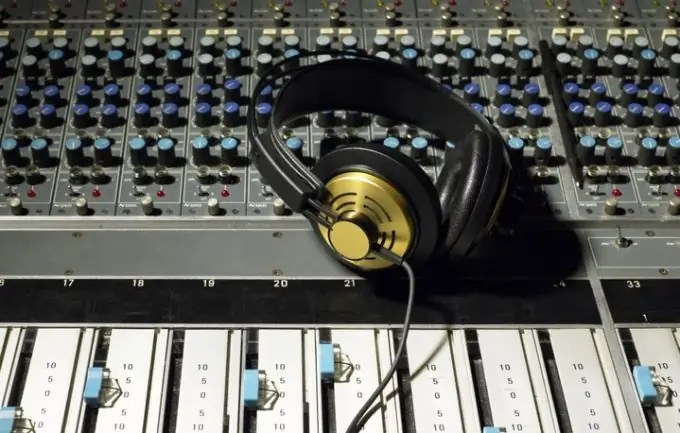The modern possibilities of home recording could be the envy of professional studios that existed several decades ago. Since then, more high-quality, but at the same time affordable equipment has appeared on the market, and the use of a computer for sound recording made it accessible to almost everyone.

It is necessary
- - a computer;
- - audio editor;
- - microphone;
- - microphone preamplifier;
- - sound card;
- - cables.
Instructions
Step 1
First, install one of the many music editors on your computer. Over time, you will be able to choose something to your liking, but for a start, you can recommend using Adobe Audition programs. They are easy to use but have a wide range of possibilities. For those who do not doubt their abilities, the Cubase program is suitable. It is more functional, but it will also be more difficult to understand it. However, whoever can handle it will get their hands on a very powerful home recording machine.
Step 2
If you intend to deal exclusively with electronic music, then install another sequencer editor (Frooty Loops, Project 5, etc.) and you can start creating. If you prefer live electronic sound, you need to attend to buying a good microphone. Condenser microphones work well for studio recording of voices and instruments. Of course, there are also tape, tube, but they will cost significantly more. Dynamic microphones are more suitable for live performances, however, they can be used in the studio as well.
Step 3
Unfortunately, if you use only a microphone and a standard sound card for sound recording, the result will not be very good. Therefore, in advance, you should attend to the purchase of at least an inexpensive microphone preamplifier and a semi-professional sound card.
Step 4
When everything you need is assembled, connect the microphone to the preamplifier input, the preamplifier output to the microphone input of the sound card, adjust the recording level and you can start working.
Step 5
Select one track for recording in the music editor, record the part of one of the instruments. Use the built-in metronome in the editor, it will help you coordinate the parts with each other in rhythm and tempo. Once the part has been recorded, assign the recording to the next track, and while listening to the previous one, record the part of another instrument.
Step 6
When all the parts are recorded, you just have to adjust their volume relative to each other, correct their amplitude-frequency characteristics so that one track does not overwhelm the other, apply the necessary processing effects and save the resulting mix as an audio file.






